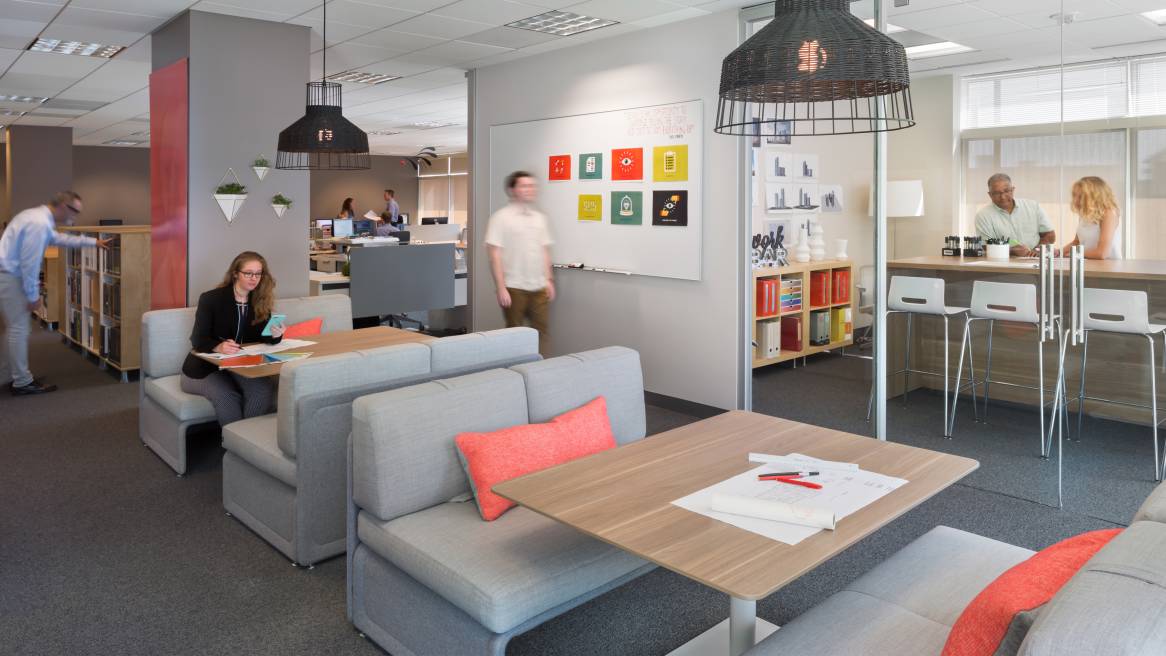Little Diversified Architecture
What makes shared spaces appealing beyond their vibe? What features cause some to be more desirable, more effective and a smarter use of space than others? Can these spaces really change how people work for the better – and improve how they feel about their work and their organization?
It’s questions like these that Little, a leading international architecture and design firm, wanted to explore when they had the opportunity to expand and reconfigure their Washington, D.C., office. Like so many organizations today, their workplace is mostly open plan. Meeting spaces were large, formal conference rooms. Access to smaller meeting rooms, focus spaces or informal spaces for impromptu conversations was extremely limited. Although employees reported that it was easy to collaborate spontaneously in the open plan, they also expressed that a lack of privacy and noise were a problem. In addition to needing additional space to hire more people, company leaders saw the expansion as an opportunity to create different kinds of spaces that would give employees more choices – particularly for team and individual focus work – and address some wellbeing benefits, like the ability to alter postures in their workspaces.
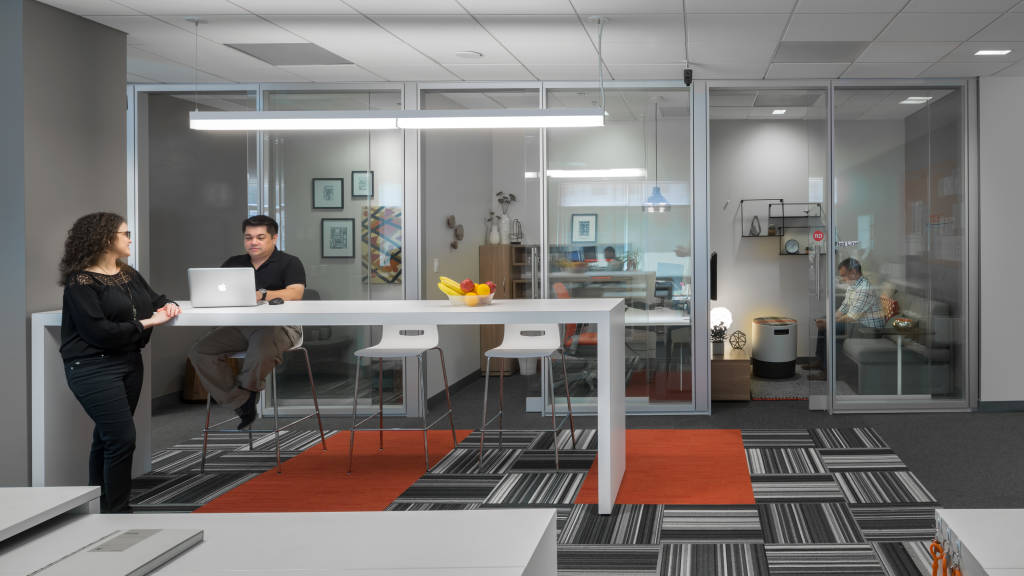
“Even relatively small steps to incorporate a greater variety of shared spaces reaps significant rewards.”
Little’s goals dovetailed perfectly with Steelcase’s ongoing research around the importance of providing a variety of settings as office work rapidly shifts toward more robust collaboration and creative problem-solving. “We were studying the effectiveness of a variety of spaces and how to design shared spaces that really performed for their users – specifically, to understand the spatial attributes that drive occupancy and use,” explains Kristin Boer, a Steelcase applications marketing manager. “As we understood what Little wanted to accomplish, we realized this was an ideal opportunity to further our research and learn more together.”
Little’s decision to partner with Steelcase resulted in eight new spaces – five enclosed focus rooms and three collaboration spaces. Once completed, 40 days of camera ethnography meticulously documented how frequently these new spaces were used and for what kinds of work. Adding to this visual documentation, pre- and post-occupancy surveys provided rich qualitative data about employees’ perceptions and preferences.
Anh Tran, a senior associate at Little, describes the joint research project as “a living lab approach,” purposely designed to benefit Little employees and also deliver proven value to corporate clients who might be considering taking a similar approach to their workplace. “Being able to test concepts using a research-based approach is very important to us,” she explains. “We look for ways to verify our design intuition to prove that the hypothesis to work in certain ways really does work. We’re constantly trying to do better, generate more insight and more proof, more fine-tuning. Because clients today want more specificity about what kinds of environments can create the advantages they’re after — to know which furnishings in which settings seem to be more appropriate for certain types of behaviors and types of work.”
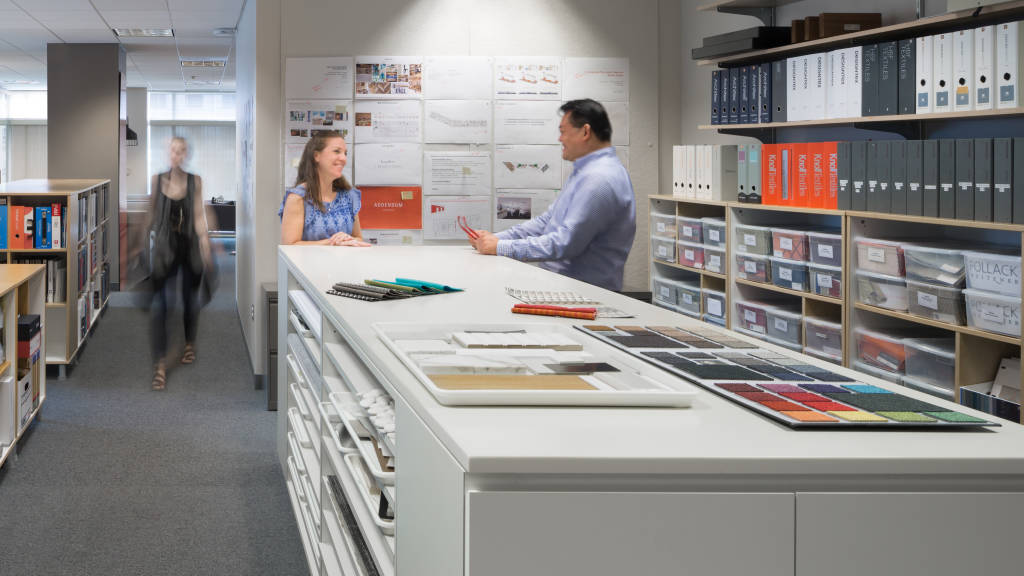
“The biggest challenge for most organizations is around balancing collaboration and focus — supporting both the interactions of “we” and the privacy of “me” — spaces that are purposely designed to provide desirable and appropriate choices for different people and different modes of work throughout the day,” says Boer.
Fully enclosed, Little’s five new focus rooms support intervals of concentration and privacy. Two are high-performance spaces with height-adjustable desks and seating. Another supports focused heads-down work in a more relaxed posture. The remaining two are informal lounge settings. Research questions for these spaces included:
- Which focus rooms will be chosen first?
- Which focus room has the highest/lowest “churn” throughout the day?
- Which focus setting(s) will also support collaborative behaviors?
- Which spaces will be chosen when audio privacy is needed?
- How often will users reconfigure the focus rooms?
The three work-lounge settings were designed to support collaboration and socializing away from the workstation. One was furnished with a large high-top table and stools, another with booths and the third was a living-room-like setting. Research questions for these spaces included:
- Which collaboration setting(s) will be chosen first?
- Which collaboration setting(s) host longer meetings? Which host more?
- Which collaboration setting(s) will also support focus behaviors?
- What is the dominant work mode supported by each setting?
The Steelcase/Little team started out with some hypotheses about answers to these questions. Some of their assumptions were confirmed by the data — but not all. In fact, several findings were disruptive and transformational, what Tran describes as “those moments of insight where we’re totally surprised by an outcome.”
For example, she says, “one of the things that surprised us was that spaces we had anticipated to be more social spaces were also used for intense focus.” In particular, the collaborative space with a high-top table and stools, designed to foster impromptu connection and collaboration, was instead used about 60% of the time for focused individual work. “So there’s this design intent versus user preference,” she continues. “We were surprised to see people happily doing focus work in an area we coded as a social area.” The high-top space was also more preferred for collaboration than the other two work-lounge settings, though researchers had predicted that the cozy living-room-like setting would be preferred. Tran’s personal analysis of why the high-top setting is so popular: People just seem to like standing up. “There’s this flattening of hierarchy that standing offers. It makes for a more pleasant social relationship that’s definitely worth investigating more deeply.” Also, while two of these collaboration areas included a large monitor for projection and videoconferencing, it was closer to users in the high-top setting, allowing them to see on-screen detail more easily.
“A large part of design work is production that tends to be task-based and individually oriented.”
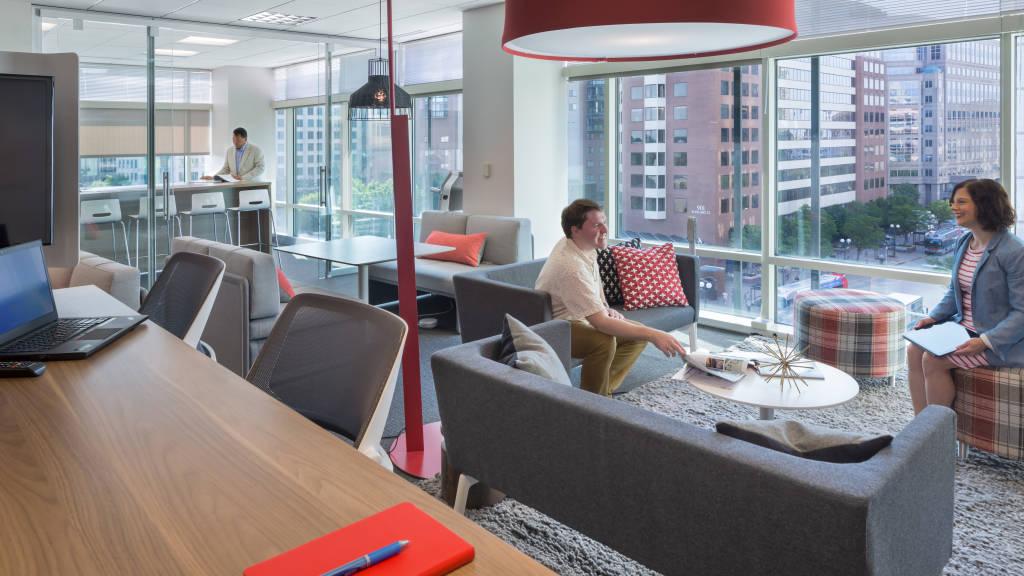
Another surprise was that amenities to support productivity seemed to be in higher demand than lounging comfort in focus spaces. “We thought that the spaces with lounge seating would be more popular because of their relaxed seating options – we expected people to pick comfort over productivity,” says Tran. In fact, the opposite appears to be true: The two focus rooms with sit-stand desks were most often selected. The easy adjustability, task posture, access to a secondary monitor and other worktools they offered seemed more desirable than the less formal lounge settings.
The importance of adjacencies was another key finding. Case in point: Two essentially identically designed and furnished focus rooms produced different use rates. One was approximately 10 feet away from the next workstation, while the other less-used one was fewer than four feet away from the desk of a principal in the firm. “Both got used, but we saw a definite order of preference that verified a couple of things for us about the granularity of distance and sound, and perhaps what hierarchy and adjacency do for utilization,” says Tran. “This needs to be verified by more study, but we look for clues wherever we can find them.”
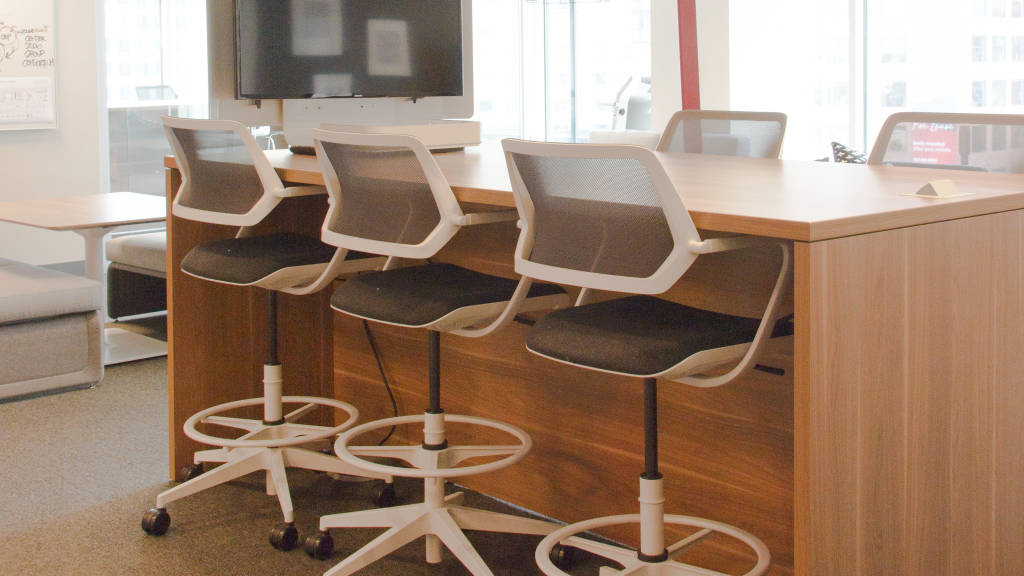
The major findings from the post-occupancy study show improvement in employee satisfaction with their workplace. Respondents reported it was easier to collaborate, and metrics for both individual workspaces and team and group spaces improved by significant margins. Improved satisfaction with privacy was especially noticeable, jumping from 2.8 on a five-point scale pre-project to 3.28 post-project. There was an approximately 14% increase in employees’ perceptions of their ability to do heads-down work and a 19% increase in respondents who felt they were able to move throughout the day to different work settings. Other interesting indicators of impact: Headphone use dropped 18% in employees’ post-occupancy ranking of their most-used tools, and interest in working remotely dropped from 54% to 45%.
“Employees say it’s now easier to collaborate and there was a 14% increase in perceptions of their ability to do heads-down work.”
As valuable as data and evidence-based design have become, Tran points to the continuing importance of applying human insight to design problems. “New trends in design can be explored and iterated, but especially when it comes to data, you really need to have conversations when you do studies,” she emphasizes. “A lot of people think data is a magic bullet, and it really isn’t. It needs context and discussion, because it’s not stagnant. Data is a snapshot. Humans don’t stay the same, spaces don’t stay the same, furnishings don’t stay the same and the ways in which we work don’t stay the same. I feel like we’re really on the cusp of realizing that in design research.”
“The gains that Little has achieved suggest that even relatively small – but purposeful – additions of these shared spaces can reap significant rewards,” adds Boer. “We were able to increase people’s happiness and productivity by making strategic design decisions about the kinds of spaces we provide for people.”
Tran agrees. “Especially now when everybody’s pushing for any advantage they can get, it’s important to know that you don’t always have to do some grand, scary change to make the space and the experience appreciably better.”

